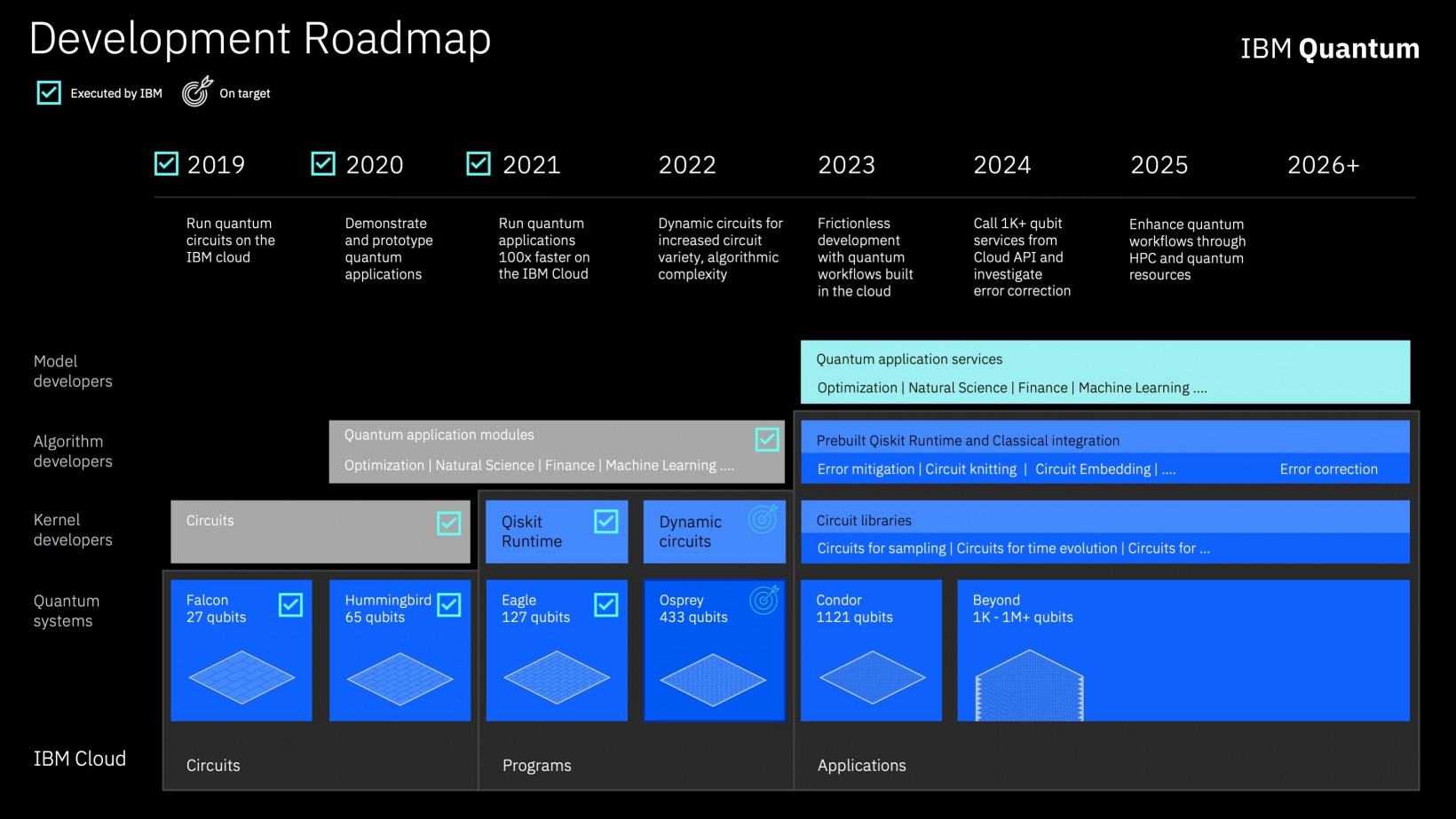
The quantum computing race is far from over, but it’s clear that IBM is off to an early and substantial lead.
This assessment comes on the heels of Big Blue’s latest launch: two new Qiskit Runtime primitives debuting today (you read it here first).
Quantum computing promises to do two things for society: help us solve today’s problems faster, and put us in a position to solve tomorrow’s problems.
And whether those problems involve optimization, simulations, or needle-in-a-haystack searches, we’ll need computers powerful enough to solve them.
But we’ll also need cloud infrastructure, software, and all kinds of interfaces between classical and quantum systems.
IBM developed Qiskit Runtime to make it easier for people who don’t have a degree in physics to operate quantum computers.
What is it?
As the company put it in a recent blog post:
Qiskit Runtime lets users deploy programs instead of circuits. Containers allow them to package up code and all its dependencies so the quantum program runs quickly and reliably from one computing environment to another.
And the new primitives take that a step further by making Qiskit even more accessible to algorithm developers.
Dubbed “Sampler” and “Estimator,” the two new primitives essentially containerize many of the necessary steps in order to streamline the quantum computing stack for devs.
IBM’s Quantum Platform Lead, Blake Johnson, and Tushar Mittal, Senior Quantum Product Manager at IBM, told Neural:
Quantum computers are inherently probabilistic. One of the things that make them particularly unique is that they produce non-classical probability distributions as their outputs. Consequently, pretty much all of algorithm development requires working with these non-classical probability distributions.
The two most common things one can do with a probability distribution is to sample from it or to estimate a quantity on it, which are precisely what the Sampler and Estimator primitives do.
As for what, exactly, they do… that’s a bit more complex. And it depends on what you’re trying to accomplish. The whole point of quantum computing is to make things faster.
But qubits — the quantum equivalent of a computer bit — aren’t smart. They don’t know what problem you’re trying to solve. And there are no apps for quantum computers.
This means developers at the cutting-edge have to program circuits and reconfigure servers every time they want to try something.
However, there are numerous problems that can be reduced to simple starting points called primitives.
Sampler and Estimator pretty much do what they’re called, but they accomplish sampling and estimation through the use of both classical and quantum computing.
According to Johnson and Mittal:
Since these operations are at the heart of working with quantum computers, we expect the Sampler and Estimator to have wide applicability across most algorithmic use cases. For instance, a developer might use the Estimator to estimate an observable corresponding to the electronic structure of a molecule, the cost of a configuration of an optimization problem, or the kernel of a machine learning task. Meanwhile, the Sampler would get used in search-like tasks such as Grover’s algorithm.
Why does it matter?
Quantum computers are still mostly experimental. Sure, IBM is solving problems today with its cloud-accessed quantum computing systems and there are a handful of other companies offering quantum-based solutions to clients right now.
But, for the most part, the physicists, engineers, and developers working at the cutting-edge of quantum computing are inventing as they go.
Eventually, IBM wants its clients to decide what problems are important and how the company should go about implementing quantum-based solutions.
But the huge disconnect between the quantum physicists operating the machines in the laboratories and the average computer specialists building algorithms for businesses makes it incredibly difficult for laypersons to access quantum solutions.
Qiskit Runtime and these new primitives are a monumental step in the right direction. You can build the best spaceship in the world, but if nobody can pilot it or understand its navigation systems: it’s useless. Qiskit Runtime primitives are, essentially, the pilot’s manual.
That’s why these baby steps are so important. The fact that IBM’s in a position to need these quantum primitives is the biggest tell-tale sign of its market position we’ve seen — and it already boasts a whopping 400,000 users in its quantum ecosystem.
What’s next?
IBM is the clear front-runner in the quantum computing race. It’s already in the market, keeping pace with academia and other big tech outlets, and innovating at the forward-most edge of hybrid quantum-classical computing.
But Big Blue is far from content to rest on its laurels. A quick gander at the company’s quantum roadmap tells you everything you need to know about where its ambitions lie.

Perhaps the most notable entry above is the upcoming launch of the “Osprey” chip. At 433 qubits, it’ll become the world’s largest quantum chip when it launches. And the company plans to more than double that next year.
If IBM can make good on the items in this roadmap, its competitors will be hard-pressed to catch up.
You can argue whether Google, Microsoft, D-Wave, or a dark horse candidate is in second place. But there’s no debate that IBM is winning the quantum computing race in 2022.
Update 8:53 4/12: IBM provided us with an updated version of its quantum roadmap, replaced original image with new one.
Get the TNW newsletter
Get the most important tech news in your inbox each week.





